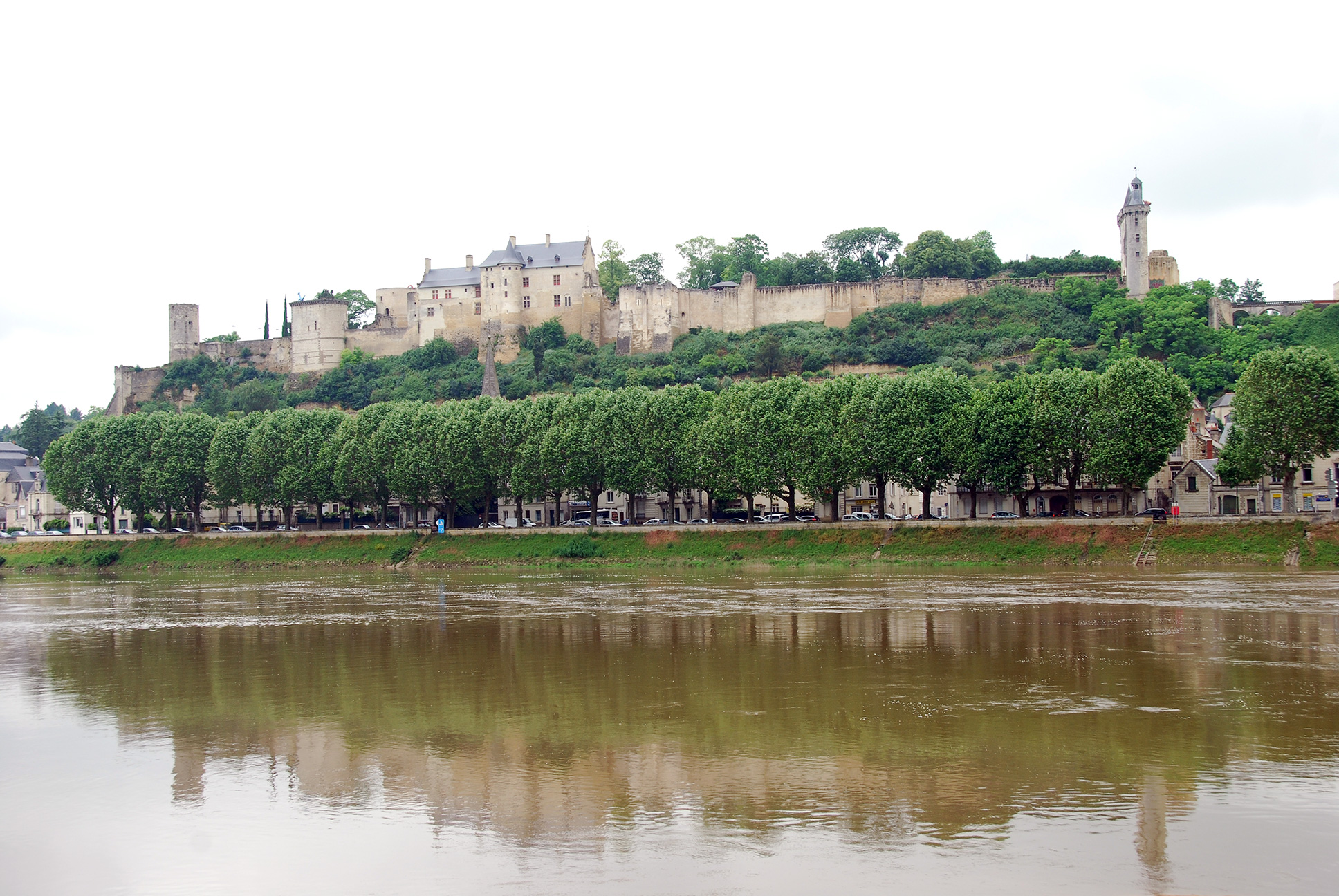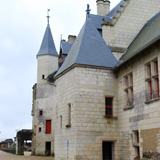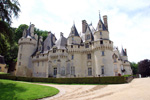History
The Royal Fortress of Chinon includes a rich history, which played a significant role in France's and England's futures during the middle ages. While a Roman fortification existed on the site dating back to the 5th century, the first castle within Chinon was constructed during the 10th century by the Count of Blois, Theobald I.

In 1044, the Counts of Anjou took control of Chinon by expanding their domain into Touraine. Subsequently, the fortress became one of their primary residences. In 1154, Henry II inherited the claim to the crown of England from his mother. While ruling England and parts of France, he commissioned extensive building efforts at Chinon, including constructing Fort Saint George, which served as the location for his administration and government-related functions. Nearly two decades later, in 1172, a conflict between Henry and his sons reached a crossroads after they conspired with their mother, Eleanor of Aquitaine, against him. Betrayal by his sons affected him until his death. Henry imprisoned his wife at Chinon before sending her to England under house arrest for nearly 15 years.
Following the death of Henry II in 1189 at the fortress, his lands, including Chinon, passed to his son Richard I, the Lionheart, who reigned over the Plantagenet Empire. In 1191, Richard allied with the King of France, Philippe Auguste, during the Crusades. However, the Emperor of Germany imprisoned Richard upon his return from the Crusades. Taking advantage of his absence, Philippe attacked Normandy, Maine, Poitou, and Anjou. Making matters worse, Richard's brother, John, betrayed him by also entering an alliance with the King of France during his imprisonment. Richard was eventually freed from prison after a considerable ransom was paid for his release.
In 1199, Richard the Lionheart was wounded during the siege of Chalus in Limousin, France, when an arrow pierced his neck. The wound later became infected, and Richard died without an heir. Consequently, ownership of Chinon reverted to his brother John who served as King John of England and Count of Anjou. From 1200 to 1202, John made various improvements to the Fortress of Chinon. In 1200, he chose Chinon to celebrate his marriage to Isabella of Angouleme, cousin to the King of France, whom he took from suitor Hugh de Lusignan. This marriage was the pretext for Philippe returning to a state of war with John.
On June 23rd, 1205, Philippe retook Chinon after a siege of nine months while John was away in England. Philippe added the Coudray Tower to enhance the castle's defenses. John returned to Chinon in 1214 to sign a truce with Philippe.
Approximately a century later, Chinon was utilized to imprison dignitaries of the Order of the Temple, the Knights Templar, in 1308. Philip the Fair, King of France, had five Templar dignitaries, including the Grand Master, Jacques de Molay, detained at Chinon to derail any attempts at absolution by Pope Clement. The pope sent three cardinals to the fortress to question the dignitaries to reintegrate them into the Catholic Church. The parchment of Chinon was the result of this act.
Another notable historic event at Chinon began in 1419 when the King of France, Charles VI, disinherited his son, Dauphin Charles. Thereafter, Charles VII withdrew to Bourges and the lands south of the Loire, where the Fortress of Chinon was one of his residences. In 1427, Charles enacted his court at Chinon. A couple of years later, in 1429, Joan of Arc visited him at Chinon. The Coudray Tower served as her place for lodging. Additional fortification work was incorporated at Chinon in 1560 during the French Wars of Religion. After that, it eventually fell into disrepair until restoration undertakings began approximately three centuries later in 1857. From 2003 through 2010, revitalization endeavors, including restoring the Royal Quarters, were completed.
Castle Highlights
The Royal Fortress of Chinon consists of three castles: Fort Coudray, Middle Castle, and Fort Saint George. The best views may be attained from across the River Vienne.
The Royal Quarters located in the Middle Castle represent the most impressive portion of Chinon. These rooms were occupied by Plantagenet kings and visited by Joan of Arc. Before 2003, the Royal Quarters lacked a roof and consisted solely of walls. After extensive repairs, the Royal Quarters were restored with rooms full of interactive displays and audio/video features narrating the castle's history and story regarding Joan of Arc.
Several towers reside across the courtyard in the Middle Castle from the Royal Quarters. The Argenton Tower was constructed during the late 15th century. It enabled more robust defenses, including five-meter-thick walls and embrasures for cannons to oppose new gunpowder weapons of the time. The Clock Tower, which dates back to the 14th century, represents the most impressive tower of the castle. It serves as the entrance to the Middle Castle, over a drawbridge and through a portcullis. Its tall, slender shape makes it unlike other rounded towers popular in most castles. The five levels of the tower are accessible via a decorative spiral staircase.
Within the Fort Coudray portion of Chinon resides Coudray Tower. Philippe Auguste built it after he captured the fortress from King John in 1205. Its name may have originated from the grove of hazelnut trees existing within the fort, "Coudres" in old French. More than a century earlier, it was used to imprison dignitaries of the Order of the Temple in 1308. From a touring perspective, the Royal Fortress of Chinon can easily take a half day or more to visit. However, the Château de Langeais is located within close proximity should you have additional time.



